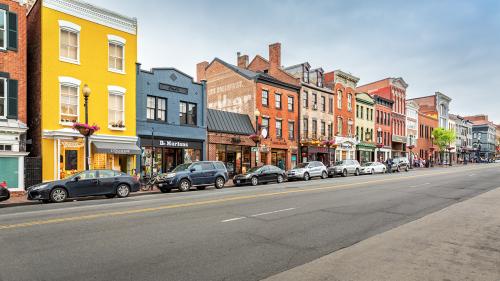Editor’s Note: The presidential election season continues to get longer and longer, and Election 2016 is no exception. Elaine Kamarck’s newest book,
Primary Politics: Everything you Need to Know About How America Nominates its Presidential Candidates
,
explores the history of our unique nomination process. In a series of blog posts between now and the conventions, Kamarck will explain key dates, deadlines, and political obstacles that the 2016 candidates will face throughout the process.
As we approach the first real contests of the 2016 election year new and old voters will find themselves wondering:
- Why is the presidential nominating system such a mess?
- Who thought up this ridiculous system that lasts from February to June, then goes into a summer convention?
- Why does every state seem to do it somewhat differently?
- Why don’t the states have their primaries on one day?
- Why don’t states in the same region have primaries on the same day?
- What are delegates anyway?
- And do they even matter?
Good questions all. For there are many ways to organize a nomination system and every one of them is more rational and orderly than the one we have now. By far the simplest and most straightforward system would be to have one national primary where Democrats get to vote for their candidates and Republicans get to vote for their candidates. Over the years there have been many proposals along these lines and polls show that the public seems to like this option. Nonetheless, in spite of national primary bills being introduced in Congress more than 100 times since 1911 none of them has ever gone anywhere.
The other popular idea is to have a regional or rotating primary system. Regional primary plans generally group states into regions and then rotate the regions from year to year so that the same region doesn’t go first every four years. Some of these plans allow Iowa and New Hampshire to go first. Others don’t. A variation on this theme groups states by size with small states going first on the same day—and large states going last on the same day. In recent years, the National Association of Secretaries of State has proposed regional primary plans and the Republican National Committee has discussed variations on plans that group states into certain days.
Finally, given all the hoopla surrounding the primaries and caucuses, it is understandable that voters forget that what really matters is who wins delegates to the convention. It has been many years since we had a convention that went beyond a first ballot and so the identity and preferences of the delegates themselves hasn’t mattered. But it is always possible that no one candidate will win a majority of delegates before the convention starts and the first ballot is taken. If that were to happen we will be treated to the machinations of several thousand convention delegates.
But no more rational plan has ever gotten even close to enactment. Why? Very simple. No one is in charge of the presidential nominating system. The system has no ultimate decider. Unlike the Electoral College, it was left out of the Constitution by the Founding Fathers; men who were trying very hard not to think about those evil things called political parties or factions. And so it evolved in a sort of haphazard fashion.
Let’s look at the players. The Democratic National Committee and the Republican National Committee have worked hard to assert and maintain control over their respective presidential nominating processes. After all, besides putting on a convention and trying to maintain majorities in the Congress, this is their reason for existence. Consistent with the overall philosophy of each party, Democrats have been more comfortable with central control over their state parties and Republicans are more in favor of letting the state parties have greater autonomy. But when it comes to issues like when the process begins, both national parties have had an interest in cooperating in order to run a nomination system that doesn’t start on Christmas Day.
But the hold of the national parties over what the states do is hardly absolute and state parties in both parties often diverge from what Washington wants. Ditto for state legislatures, who make the laws and pass the appropriations for presidential primaries and who often do not see eye to eye with one or more of the state parties.
So that leaves Congress, which would have to legislate any more rational system and has been reluctant, for many years now, to get involved—particularly given the fact that both political parties have opposed congressional action. And at the national level there are arguments on both sides of the issue of whether or not congressional involvement in the process would violate the First Amendment right of free association cherished by the political parties.
And so we come to the nub of the problem. There are 50 state Democratic Parties, 50 state Republican Parties, 50 state legislatures, a Republican National Committee and a Democratic National Committee and Congress. All in all, 153 independent political organizations. The probability of all of them coming to consensus on a more rational plan for nominating the presidential candidates? Very low. The probability that the system will continue to evolve as it has for the past century or more? Very high.
The Brookings Institution is committed to quality, independence, and impact.
We are supported by a diverse array of funders. In line with our values and policies, each Brookings publication represents the sole views of its author(s).




Commentary
Why is the presidential nominating system such a mess?
January 25, 2016